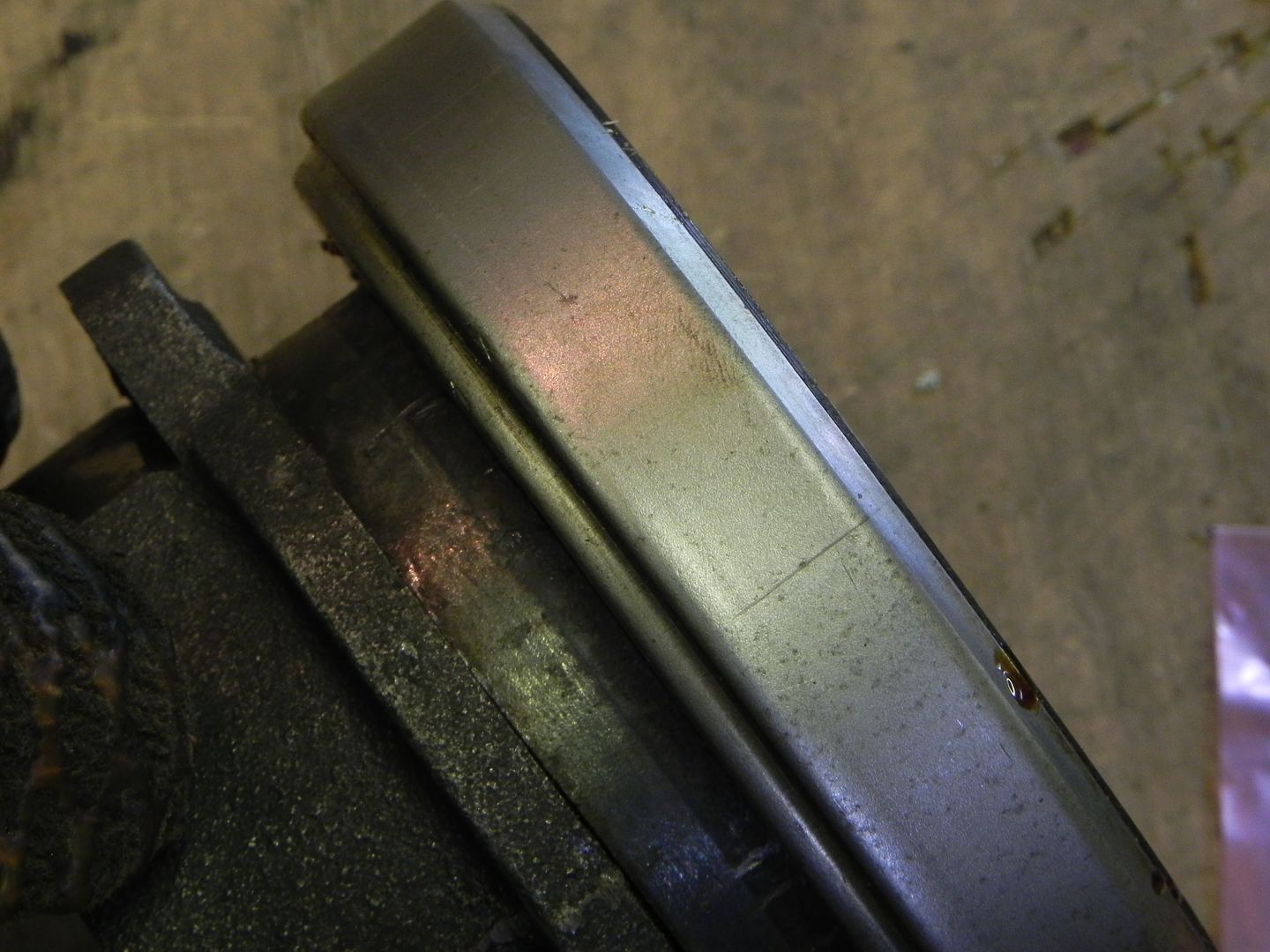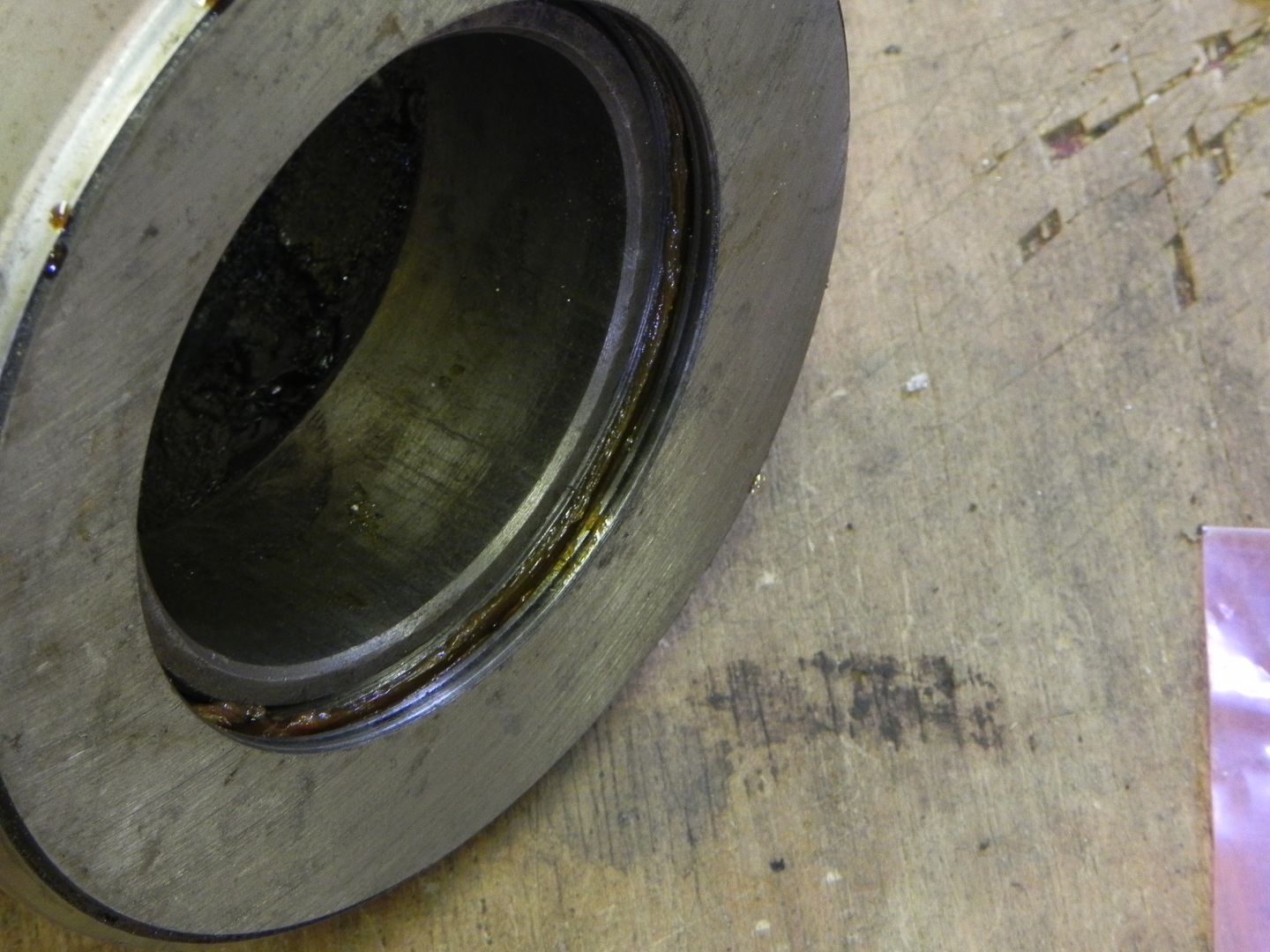I got a new clutch and bearings from Malcolm Hipperson which, according to the parts book, (and other aftermarket parts suppliers which I subsequently checked), were correct for the live drive tractor.
When I came to install the thrust bearing I noticed that the new bearing was a lot slimmer than the one I was replacing. Putting this down to redesign I went ahead and fitted it onto the hub but, once on, it did not look correct at all, the hub protruded through the front of the bearing beyond the bearing thrust surface.
I placed the bearing/hub assembly on the forks of the new clutch and discovered that I could spin the bearing without it touching the thrust surface, the fingers rested on the inner race of the bearing not on the thrust bearing surface. If it had been fitted the fork adjustments would have been worn off or the hub itself would have worn away.
The new bearing did not have the thick thrust surface that covers the front of the hub, it was a thrust bearing for a Ford 3000 that has a totally different thrust finger set up.
I took it back to Malcolm and he got straight on to the supplier who says “Yes, we know about the problem but cannot get a bearing to meet the original specification”!!
Malcolm was very apologetic and helpful, he found me a bearing with a thrust surface and although it is narrower than the original, I can fit a 2mm spacer behind it on the hub to bring it out to the same position as the original.
It is highly likely that other suppliers are supplying the wrong thrust bearings with their clutches believing it is the same as the 2/3000 so please check closely when fitting a new clutch assembly.
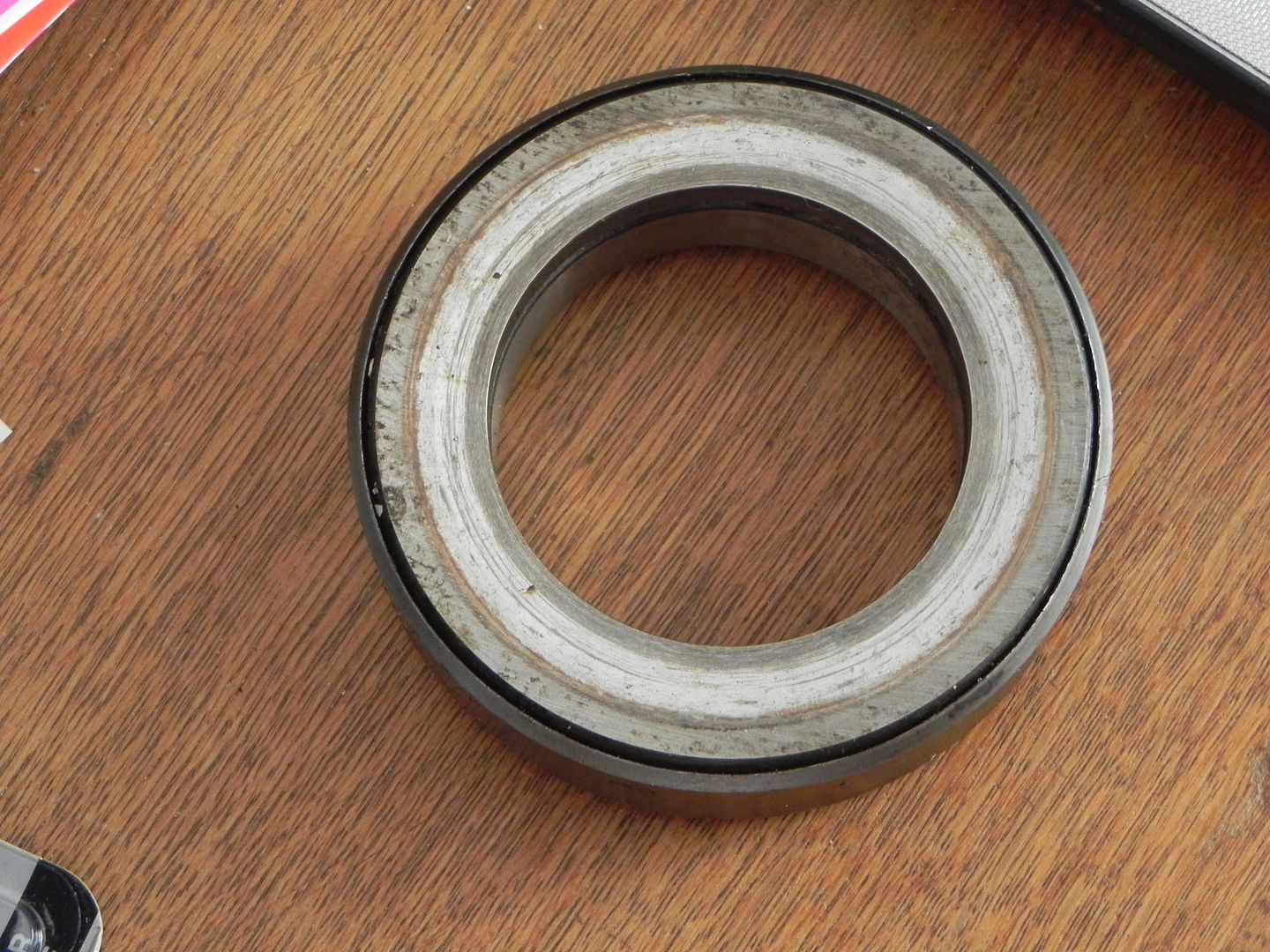
The old bearing with its thrust surface.
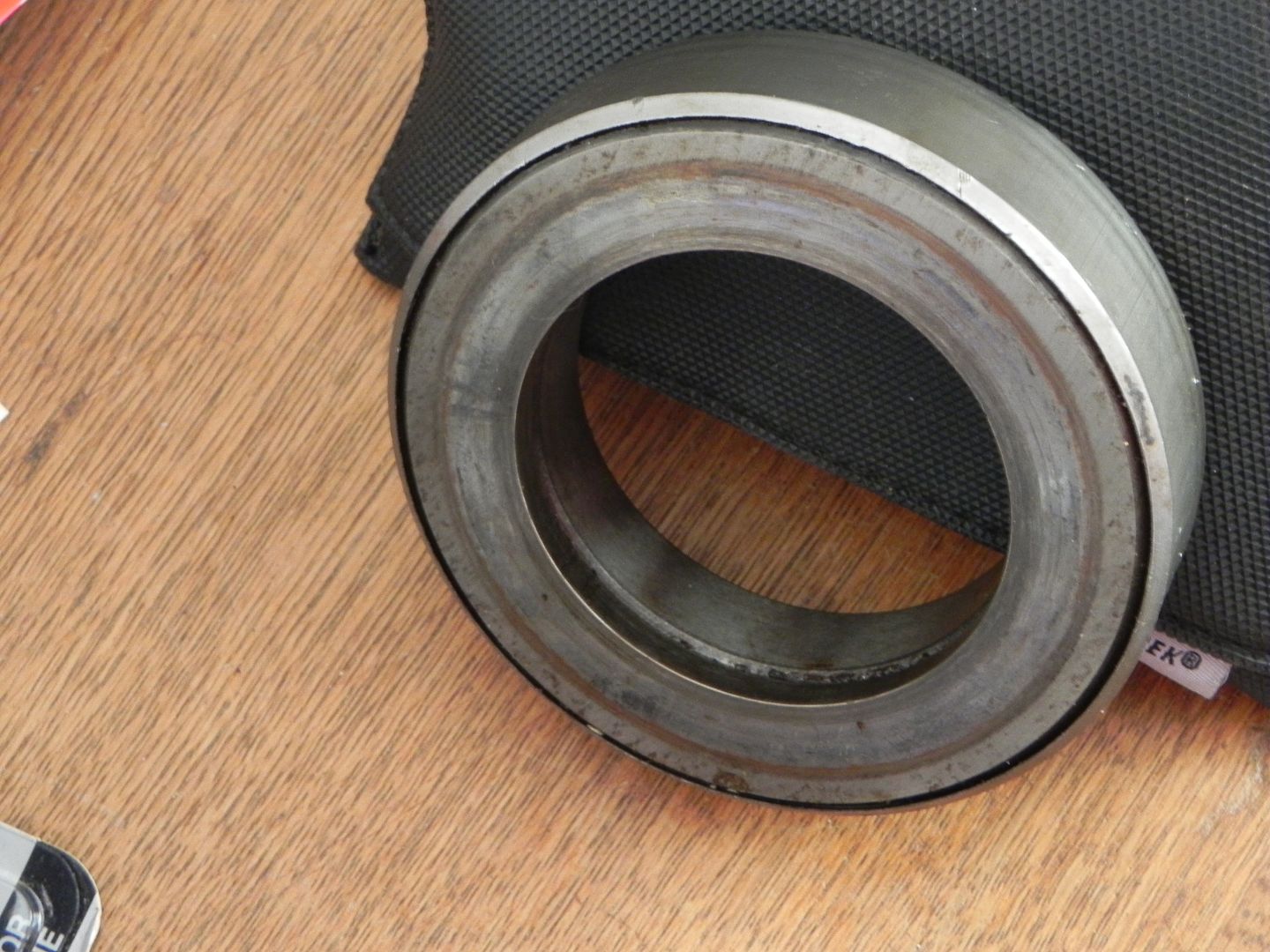
Check the thickness of the thrust surface, this covers the end of the hub.
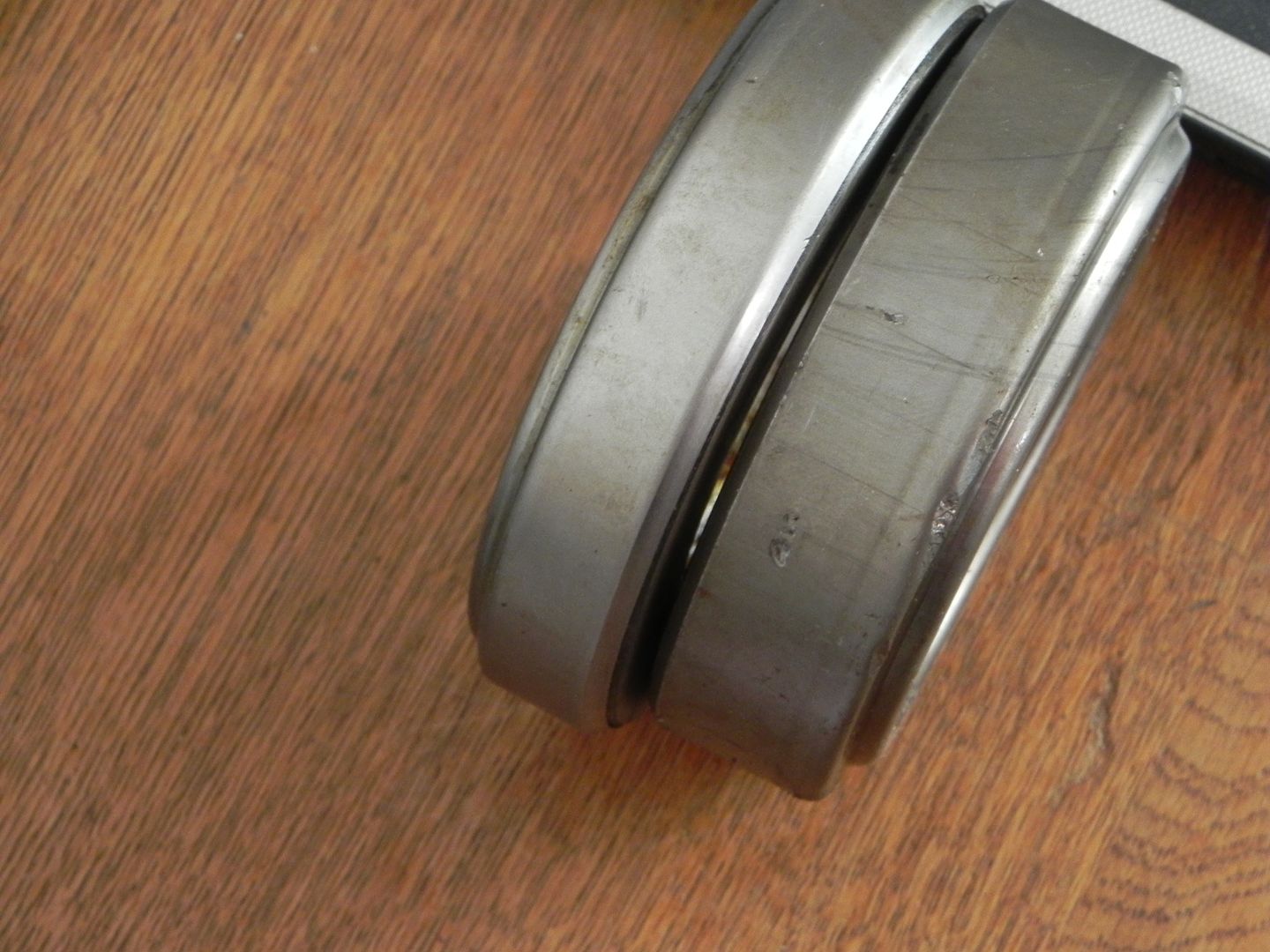
Note the difference in the thickness of the new and old bearings.


